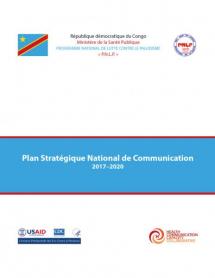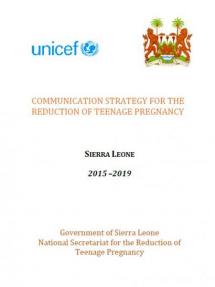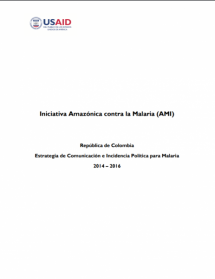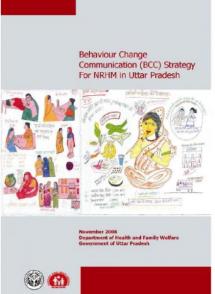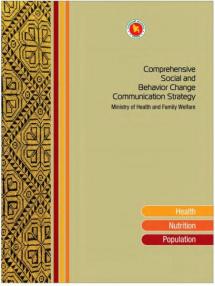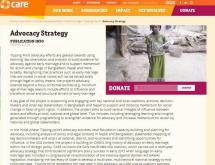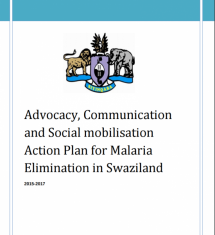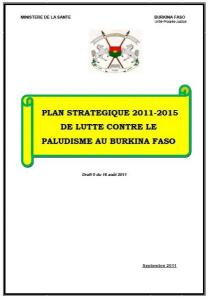Democratic Republic of Congo National Malaria Communication Plan
Ce Plan stratégique de communication pour le changement social et comportemental (CCSC) en République démocratique du Congo (RDC) pour la période 2017 – 2020 vient en appui au Plan stratégique national de lutte contre le paludisme 2016 – 2020. Ce plan est porteur de tous les espoirs, d’autant plus qu’il est élaboré au moment où l’Alliance des leaders africains contre la malaria (ALMA) vient de décerner à la RDC le prix d’excellence pour la lutte contre le paludisme. La remise de ce prix a eu lieu le lundi 30 janvier 2017 dans la salle polyvalente du Centre de conférences de l’Union africaine à Addis-Abeba, en marge du 28ième Sommet de l’Union africaine (UA). Ce prix a couronné des efforts consentis pour réduire sensiblement l’incidence du paludisme et le taux de mortalité de plus de 40% entre 2010 et 2015.
En effet, les acteurs impliqués dans la lutte contre le paludisme en RDC et leurs partenaires d’appui technique et financier se sont résolument engagés pendant cette période dans d’intenses activités de distribution des intrants de prévention et de prise en charge, notamment des moustiquaires imprégnées d’insecticide à longue durée d’action (MILD) et des médicaments, ainsi que dans des campagnes de sensibilisation. Il n’y a donc pas de raison de baisser les bras, mais au contraire de poursuivre sur cette lancée afin de répondre positivement au vœu exprimé par l’ancien Président nigérian, Son Excellence Olusegun Obasanjo, hôte du Sommet africain d’Abuja de 2000 sur le projet « Faire reculer le paludisme » (FRP), contenu dans son propos : « Aujourd’hui, nous avons commencé à écrire le dernier chapitre de l’histoire du paludisme. Nous avons suscité les espoirs et les attentes de nos populations – nous ne devons pas les laisser tomber. Nous ne pouvons pas les laisser tomber. Puisse le paludisme être bouté hors d’Afrique et le développement s’étendre à tous les pays africains ».
Le rêve des communicateurs congolais est donc celui d’asseoir la vision du Programme national de lutte contre le paludisme (PNLP) contenue dans le Plan stratégique national (PSN) 2016-2020, à savoir ‘’un Congo sans paludisme’’, dont l’atteinte passe nécessairement et sûrement par l’application ou la traduction, dans les faits et sur le terrain, de différentes stratégies de communication détaillées dans ce plan. Notre souhait est que l’on puisse observer, d’ici 2020 en RDC, une nation disposant d’une masse critique de communicateurs formés en techniques de communication dans la lutte antipaludique et dotés d’un matériel pédagogique adapté et des ressources suffisantes pour exécuter ce plan de communication. Cela, afin que, par une forte exposition de la population aux messages, d’une part, la majorité de la population acquière les connaissances sur le paludisme, se prémunisse par le traitement préventif intermittent (TPI) chez la femme enceinte, assainisse son milieu et utilise la MILD dans son ménage, d’autre part, que la population fréquente le centre de santé
(CS) dès l’apparition de la fièvre, recherche à temps le diagnostic précoce et une prise en charge (PEC) correcte selon les directives nationales.
Telle est l’ambition de ce plan stratégique de communication qui vise à matérialiser le thème de la célébration des Journées mondiales du paludisme (JMP) de 2013 à 2015, à savoir, « investir dans l’avenir : vaincre le paludisme », thème pour lequel l’OMS fait observer que « des avancées déjà obtenues sont encourageantes mais demeurent fragiles et, par conséquent, des efforts d’investissement dans la malaria doivent être soutenus et prolongés grâce à une conjugaison des volontés politiques nationale et internationale ».
Source: Johns Hopkins University Center for Communication Programs
Date of Publication: March 25, 2019
SIMILIAR RESOURCES
Tools
Examples
- Promoting Quality Malaria Medicines Through SBCC: An Implementation Kit
- SBCC for Malaria in Pregnancy: Strategy Development Guidance
- Social and Behavior Change Considerations for Areas Transitioning from High and Moderate to Low, Very Low and Zero Malaria Transmission
- Using Social & Behavior Change To Improve Family Planning Outcomes / Utilisation du Changement Social et Comportemental pour Améliorer le Bilan du Planning Familial en Afrique de l'Ouest
- Crisis and Outbreak Communication Pandemic Flu and Other Disasters
- Prevention of Sexual Transmission of Zika Virus
- Writing a Communication Strategy for Development Programmes: A Guideline for Programme Managers and Communication Officers
- The Strategic Framework for Malaria Social and Behaviour Change Communication 2018-2030
- CDC’s Guiding Principles for Public-Private Partnerships: A Tool to Support Engagement to Achieve Public Health Goals
- Template for Stakeholder Engagement Plan

